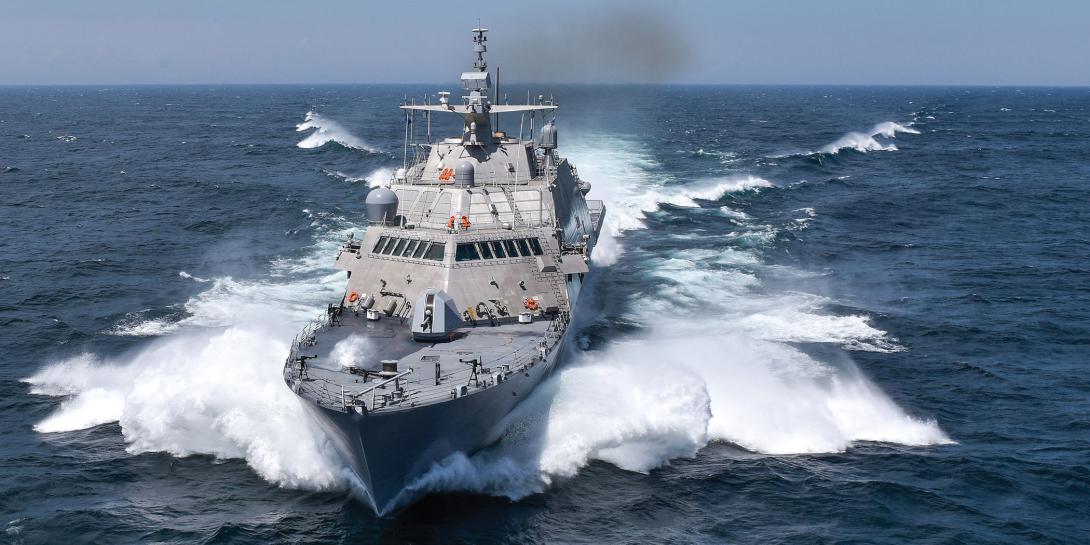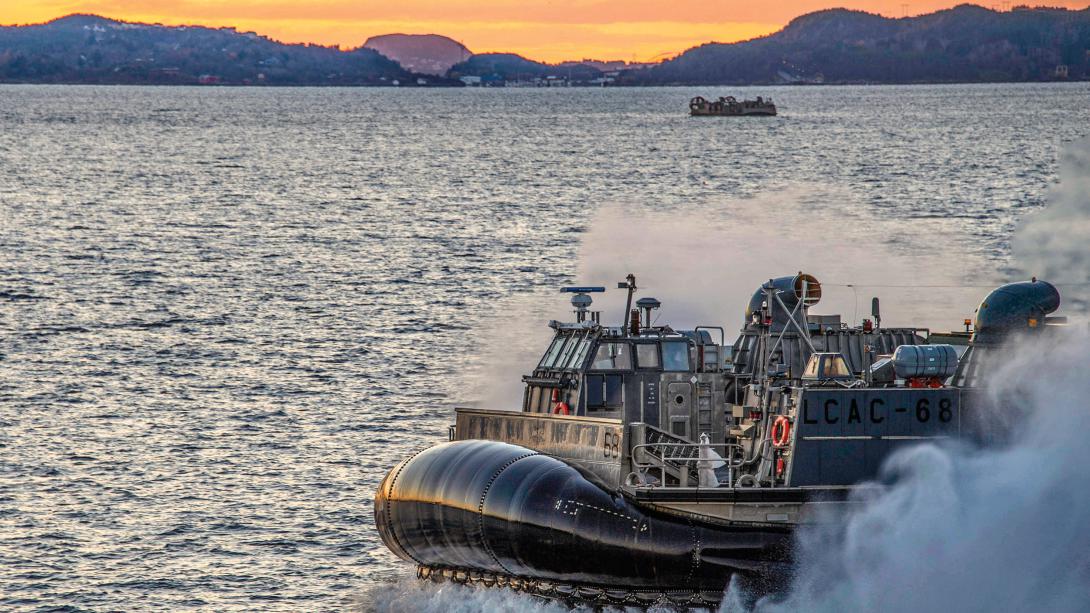Navy Information Warfare Research Speeds Along
Months after initiating a project to research and rapidly field information warfare-related technologies, the U.S. Navy has expanded the effort servicewide and expects to field the first system by the end of fiscal year 2019.
The Space and Naval Warfare Systems Command (SPAWAR) Systems Center Atlantic announced last summer the formation of an industry consortium for the Information Warfare Research Project (IWRP). The intent is to leverage the flexible contracting platform known as other transaction authority (OTA) to rapidly develop and deploy technologies.
The IWRP OTA brings together academia, traditional and nontraditional contractors and research and development labs to provide new, innovative information warfare solutions. The Navy is seeking capabilities related to a wide range of information warfare topics, including cyber warfare, cloud computing, data science and analytic technologies, assured communications, enterprise resource tools, collaboration and social networking, autonomy, mobility, assured command and control, integrated fires, model-based systems engineering, on-demand manufacturing and embedded systems in the Internet of Things.
SPAWAR Systems Center Atlantic has tapped Advanced Technology International (ATI) of Summerville, South Carolina, to manage the IWRP Consortium, which has a cap of $100 million in funding. To help with costs, ATI will collect a fee from companies joining the consortium: $500 for small business or academia; $1,500 for large contractors.
The consortium formally began with an industry day on October 1, 2018. Based on their study of similar consortia, officials expected it to take anywhere from six to 18 months to put together an effective team, but consortium membership almost immediately shot up to about 100 and reached around 200 before Christmas. Project officials expect a total of about 250 members overall.
“We put together this other transaction to form this Information Warfare Research Project consortium, and we were able to do that quicker than we ever imagined. The consortium formed probably in about a third of the time they would normally form,” says William “Bill” Deligne, SPAWAR Systems Center Atlantic deputy executive director. “I’m tickled to death at where we’re at. The time was right for this type of an initiative.”
It didn’t take long for officials to realize the project needed to expand. Initially, only Systems Center Atlantic, Systems Center Pacific and SPAWAR headquarters were involved. “Our leaders wanted to take advantage of opportunities and open up IWRP across the entire Navy, across the other Navy research and development establishments, to allow them to come to IWRP and bring in prototyping opportunities that are in line with information warfare,” reports Don Sallee, IWRP manager with Systems Center Atlantic.
The team followed the October industry day with the inaugural quarterly industry briefing on November 8, 2018. That briefing included prototyping opportunities from the Program Executive Office for Enterprise Information Systems and for Naval Sea Systems Command in addition to the SPAWAR organizations. “We’re already showing an inclusive, Navy-wide information warfare prototyping opportunity,” Sallee says.
Those prototyping opportunities included an effort with Naval Sea Systems Command related to data science, which is to provide an enterprise data warehouse and business intelligence solution for the Navy’s shore maintenance community. Other prototyping efforts involve a Systems Center Pacific project to deliver a digital front end processor, using state-of-the-art technology in radio frequency processing in the very low frequency/low frequency spectrum, as well as a Systems Center Atlantic assured communications effort associated with the Low-Altitude Range Control System (LARCS), which is providing state-of-the-art communications to the live-fire weapons range at various Marine Corps bases, including the Marine Corps Logistics Base Barstow, California.
The new LARCS will give range personnel the ability to more effectively communicate with ground troops as well as low-flying military aircraft, which will enhance safety on the range. “It’s basically a new way of providing communication at Marine Corps ranges to help make sure live-fire exercises and that sort of thing are coordinated with good communications,” Sallee explains.
The LARCS contract was awarded in January—just a few months after the consortium began. And a system could be fielded before the end of fiscal year 2019.
The consortium is currently working on 18 prototyping projects in various stages. That is expected to grow to about 50 by the end of the fiscal year.
The officials emphasize that the ultimate goal is to rapidly deploy new technologies. “It’s not just about prototyping. It’s about transitioning [technologies] to the fleet and rapid fielding,” Sallee notes.
In some cases, especially with cybersecurity software, prototypes may be tested and implemented at the same time in an effort to keep up with the threat. To illustrate the need for continual advancement, Sallee cites MacAfee software. As soon as the company releases a new version of the popular malware-countering software, programmers begin developing tools to defeat it.
“The minute we test a software application, effectively it becomes obsolete, and we have to take the lessons from that and begin developing the next iteration of prototyping,” Sallee explains. “When we develop that prototype software patch through IWRP, we will develop it, test it and field it. As soon as that happens, it’s already obsolete, and we have to start working toward the next iteration. That prototyping will constantly evolve to meet the challenges of cybersecurity.”
In addition to using an OTA to fund the consortium, the IWRP team took a unique hybrid approach to the consortium itself, Deligne offers. He explains that in similar consortia, either the government team or the lead contractor normally will determine the research projects. In doing their research, the IWRP team heard from industry that the government should be making those decisions with plenty of suggestions from participants.
“It was clear that when the government participates more in the decision-making process about what research gets done, these things work better. That’s the type of consortium we have. The lesson we did take away from the other OTAs was that it is really beneficial to allow industry to come to the table with ideas. You don’t want to limit that potential,” Deligne says. “The government’s still going to be in the driver’s seat deciding what research ultimately gets done, but we’re creating the opportunity for industry to have a stake.”
With that in mind, the IWRP team is instituting an industry-initiated ideas approach known as I3. It will be introduced to industry participants during the next quarterly briefing at the end of this month. “One of the aspects that has made IWRP stand out is that we recognize it’s not only the government that should be initiating research ideas. It should also be industry. We’re giving them the flexibility to bring topics to our attention.”
The officials say they are satisfied with the level of industry participation so far. The first quarterly briefing in November saw an 86 percent participation rate, including those tuning in via webcast. “The reason that [level of participation] is significant is that when we go in and present a problem statement, there’s a large amount of collaboration going on between the non-traditional industry base and our government agents. Things are being brought to our attention that we might not be aware of that commercial industry is doing and has been doing for years,” Sallee states. “Every one of those collaborations, every one of those engagements, is bringing a new opportunity and advanced technologies to the Navy around information warfare.”
The IWRP concept is based in part on lessons learned from the National Shipbuilding Research Program founded in 1971. Deligne participated in the program but found nothing similar when he started working for SPAWAR Systems Center Atlantic. The timing was right for a similar project because the Defense Department had been granted authority from Congress to expand the use of OTAs.
Deligne hopes that, like the shipbuilding program before it, IWRP will have a lasting effect on the way the Navy does business. “We’re in this for the long haul. We want this to be an enduring type of vehicle and an enduring type of consortium that we’ll be talking about years from now.”







Comment
good job!
good job!
Comments